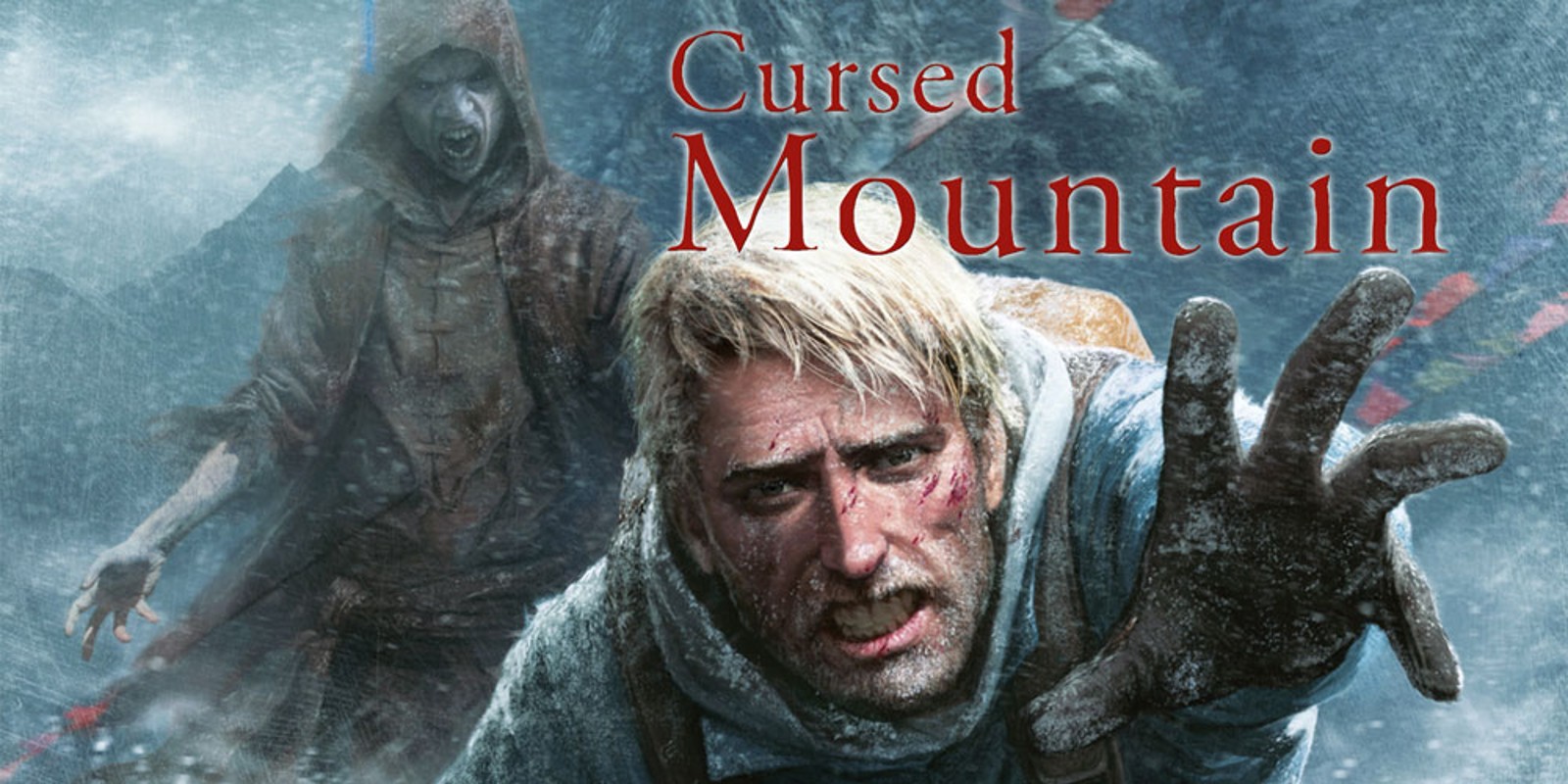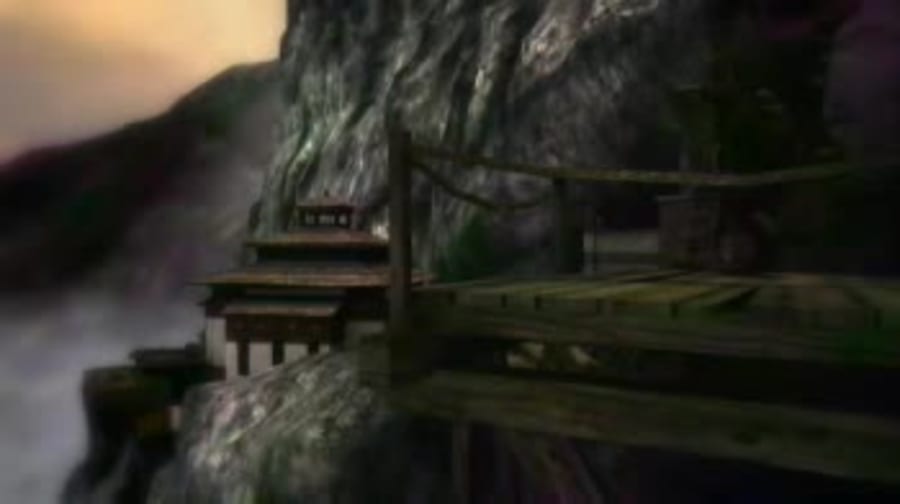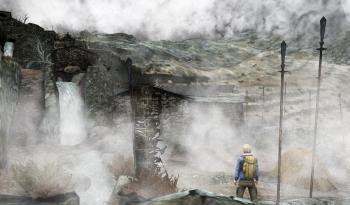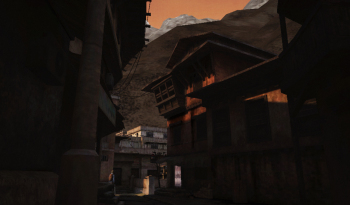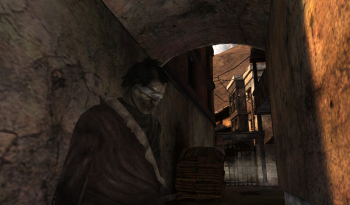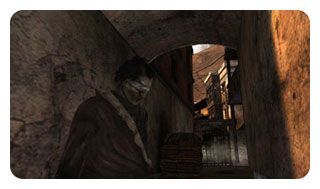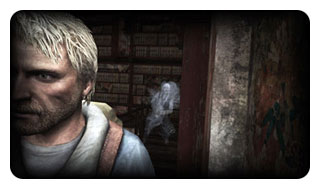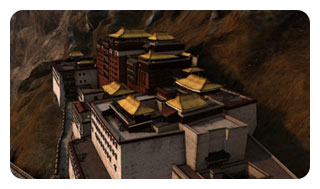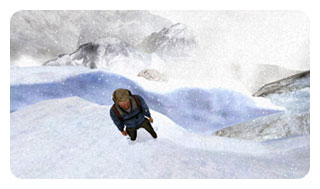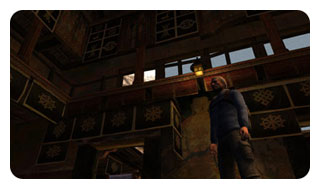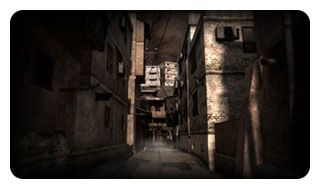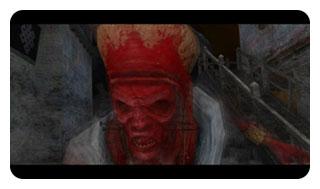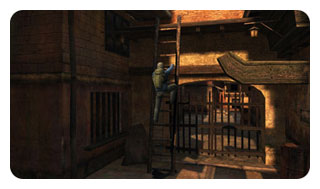Interview
MARTIN FILIPP: DEVELOPER & PR MANAGER, DEEP SILVER
Martin Filipp is a developer and Public Relations manager for Deep Silver – the developers of new survival horror game Cursed Mountain. We met up with Mr. Filipp at the E3 Expo in Los Angeles to talk all things horror and find out some in-depth details on the game…
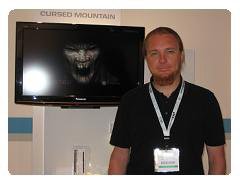
Could you tell our readers the basic storyline of Cursed Mountain?
Cursed Mountain is about two brothers; the younger brother Frank has gone missing during an expedition in the Himalayas and his older brother Eric is called by Edward Bennett, the guy who organised the first expedition, to help find him. So, the older brother arrives in the region, dominated by a specific mountain called Chomolonzo, and he tries to find out what’s happened to his younger brother…and that’s where the story starts.
What was the purpose of Frank’s initial expedition?
The younger brother was sent on the expedition to find an ancient artifact that also exists in the real world - it’s called a “terma”. It’s simply a time capsule, which was created in that region around 1,500 years ago by the founder of Buddhism, Siddhartha Gautama. And this is all real. The time capsules contain information about prayers, daily routines and also certain wisdom, which comes to light when the wisdom is needed. And even now, every 100-150 years these time capsules are actually found. And with modern science they’ve found out that this is all real, there are writings inside that are over 1,000 years old, even though no-one can explain why this happens. And Buddhism explains that the information was buried by Buddhist scholars and that when the wisdom is needed people have visions and must then try to find the capsules.
What has happened in the game is that a non-holy, non-intended person has found a capsule and used it in the wrong way. And since our game is called Cursed Mountain something bad obviously happens, and a curse is spread. At the very beginning the player has very little information and bit by bit the story evolves and at the very end, when you’re at the summit of the mountain, you’ll know what happened and hopefully you’ll find your brother alive.
This sounds like a very involved story and theme for a horror game. How do you describe the game yourself?
We do call it a survival horror game. A big differentiator from other horror games is that so much of the game world is outside. We have levels to play inside as well but normally horror games are very tight, in small rooms and so on, but we really have openness. Even though we’re a level-based game, the entire game world is in the engine and the memory the whole time. So we try to convey the openness and the wonderful panoramic view of the Himalayas throughout the game. We think it’s something very special on Wii that the scenery is there all the time, so that you always see the mountain in front of you from the beginning. You always have the goal, the motivation in front of you. But at the same time it’s a threat. Being from Austria I can tell you that the mountain thing, the alpine thing is dangerous, it’s a threat.
Every step could be your last one when you’re on a mountain. You really have to be careful and we’re playing with that - there are avalanches, there are storms that just push you aside. When you’re close to the summit, the wind is so strong and it’s so icy that you have to find protection and just go hide behind a rock until the icy wind has passed. You can get snow-blind at some stages where you don’t see anything any more, but you still have to fight your way up. This means that as well as the enemies and spirits the player encounters, climbing itself is a danger and we try to convey that in the game.
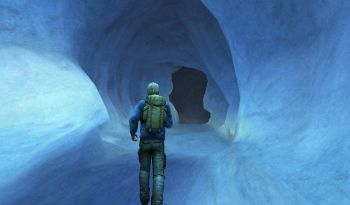
So we shouldn’t expect to see zombies in the traditional sense of survival horror games?
No and there’s a perfect example why we couldn’t feature traditional zombies. The Himalayas are at such an altitude that they have perma-frost all year round so they can’t dig graves there. If you have no graves there can’t be any bodies or zombies that are raised from the graves. This is a normal, simple explanation that’s based on real world facts.
The other thing is the “Bardo”. The game is called Cursed Mountain, so there’s a curse involved, inflicted by a goddess. The curse has affected all the dead souls, meaning they’re all held in an in-between state, known as the Bardo. This Bardo, also called the “Shadow World”, contains bad souls. You have to perform certain tests and these tests determine whether the soul has reached enlightenment and is allowed to move on to nirvana or if it has to do further life cycles on earth.
We use the Shadow World as a gameplay mechanism where we reveal certain things that are hidden to the players, which brings us to a very important point, which is that the main player can look into the Bardo, the Shadow World. In the first level, a monk teaches the player how to use the “Third Eye” where you can look into the Shadow World, not enter it, but take a look. The player receives audio-visual feedback because the screen changes, there are dark clouds and particles that represent the Bardo and audibly you hear the main character breathe heavily, since it’s a strange state for him. In this special state you can find hidden items you can’t normally see, hidden doors, for example.
So Eric, the main character, starts off totally unaware of the Tibetan culture and gradually becomes aware of this other world – The Bardo?
Yes, we play with these two worlds. The idea is to have a Western guy who’s uncomfortable with all the Eastern culture. He’s not superstitious, he’s very grounded and he’s facing all that stuff - like spirits, ghosts - and he’s not sure if this is all real or based on hallucinations coming from a lack of oxygen or high-altitude sickness. And we’re playing with that – leaving the player in the dark for a long time – is this part of the real story or is this happening just because he’s hallucinating? And we do this with the monologue, so the character’s talking a lot to himself, giving information to the player, letting him know what he’s found out about his brother.
In the game there’s both exploration and combat. Could you describe to us what the player will encounter as he plays through the levels?
There’s a balance between exploring - finding out stuff, you know, solving puzzles and collecting items to move through levels and then the combat. The combat is divided into melee combat and ranged combat, but we’re careful when we talk about attacks because we’re actually proud that we don’t have a traditional weapon in the game. We’re not another zombie slayer where you just hack and slay through blood and gore. In our case one of the main attack moves is based on prayers, or ‘mandalas’, which are performed with gestures with your hands. That’s actually the reason we got hooked on the Wii platform, because when we started working on this game more than two years ago, Nintendo had just introduced this new controller to the industry and we had this game idea in mind and as we did the research about Buddhism we thought this would be a perfect match to have a new game without a chainsaw or a shotgun. So you’re performing gestures with both arms using the Wii controls, which is quite special.
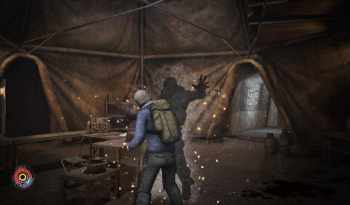
Playing a horror game with a normal controller, you’re just sitting in front of the telly, hopefully scared, but with the controller in your hand, static. In Cursed Mountain, you have to perform the gestures with both arms, so you have to face the fear in a more involved way and we think and we hope that by doing so, you’re pulled even deeper into the game itself and the game experience. This was one of the first ideas that got our producer hooked on the title.
The levels themselves can be very big. For example, you start in a city in the valley from where the trail goes up to the mountain. If you haven’t played the game before it takes about an hour or two to play through this level - even if you know the game and you run all the way through it, it takes 40 minutes. So we have these big levels and in the city, for example, you might have to find a certain object to open a door which is protected with a magical seal…You have to find out where it is, pick it up and bring it back to the door.
What other special uses do the controllers, the Wii Remote and Nunchuk, have? Can you give some examples?
One use is the flashlight. So when you perform the Third Eye move, you search the screen as if with a flashlight and can see what’s going on, so one thing is exploring and finding stuff, and on the other hand, you also use the controller in that mode to aim at enemies. When you reduce the health of the enemies to a certain point, you can then perform a so-called finishing move, even though we don’t like that expression, where you can perform a gesture, perform a prayer, and this lets the spirit go and you’ve actually done something good. You’ve released them from the state where they are stuck in the Bardo and so actually they’re now allowed to move on and this is a good thing - you’re a good guy, you’re not killing anyone.
There’s also a stage where you find a walkie-talkie, which is broken because it just works in one direction. The level takes place in a huge ice crevasse which is a labyrinth, and you’re thrown in there by a level boss. You wake up there and you have to find your way out. Then you find a dead climber and he has a working radio on him, so you pick it up and there is a guy talking to you, guiding you through the Wii Remote speaker. He’s giving you directions: go left, go right and you don’t know who he is and this is also part of the mystery. So yes, we support the Wii Remote speaker. As this game is Wii exclusive we’re really trying to make the best of what Wii offers us – balancing games, running, climbing with ice picks...
Another very cool thing is the meditation game, where you have to get very, very calm to get into the state to enter the Bardo and so we have this rhythm game with the Wii Remote and Nunchuk where you hear drums and a bell and you have to play these rhythms with the controllers. And that’s very cool.
We’re used to a lot of heroes in games being American, but we notice that you’ve picked Scottish protagonists for Cursed Mountain. Is there any particular reason for that?
Well, as a studio we totally believe in new settings and themes; we don’t want to re-invent the wheel but we want to introduce new themes and subjects to the players. The Himalayas, mountaineering, Buddhism and the ancient religious theme was one thing, and also we wanted to have new voices for the characters. That’s one of the reasons we chose the Scottish actor as, especially here in the States, there are about two to three hundred voice actors working in the industry and they’re used in many games and we just didn’t want to do that at all. Everything was done in London, in the studio, and they were all English or Scottish actors working on that game, so it’s kind of a different approach: new and fresh settings, unique stuff, not being too generic.
Do you meet many other characters or is it all a very solitary experience?
Well, there are some human characters you meet who are key. Western guys and some local guys, like monks or the abbot from the monastery and these characters reveal the story, but you also meet ghosts and spirits.
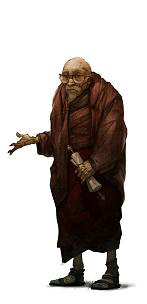
Another important point is that it takes place in the 80s. In modern-day climbing, getting lost on a mountain above 20,000 feet is still scary, but in the 80s when you only had a radio, it was much more rugged, more scary and even if you had a lot of money, it wasn’t something you could just do. And going back to the Scottish individuals, in the 80s the Scots, among other people, were some of the best climbers. And I believe it brings more to the game, because there’s no safety net, no satellite phones, no GPS. People just wanted to experience the nature, the environment, the climbing… These days you can just book it. If you have enough money they’ll carry you up Mount Everest.
You’ve obviously done a huge amount of research to make sure the player comes away with an authentic experience. What were your inspirations when you were coming up with the idea?
With the ancient and the religious background, a lot of Japanese games were inspirations and to find a way to attract Western audiences to such a subject can be challenging. There are obviously some big Japanese-game fans, but the idea was to broaden the appeal to the Western market. There are lots of films about Buddhists and the Dalai Lama. The German director Wim Wenders did a couple of good documentaries about the subject. And the film about mountaineers called Touching the Void was also a big inspiration. Also, Reinhold Messner, the Italian mountaineer who was the first on Mount Everest without oxygen, he lost his brother 15 years ago on an expedition, so, you know, this brother theme was also an important thing for us.
As I said, all the Buddhism background is based on real-world fact, so if someone wants to dig deeper they can – that’s what we did. It’s really the philosophy of our studio that real life offers so many experiences for gameplay ideas we don’t have to make it up. And it makes the gameplay more believable when you know it’s based in the real world and not totally fictitious.
Thanks very much for your time!
